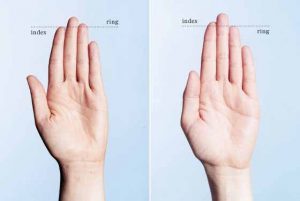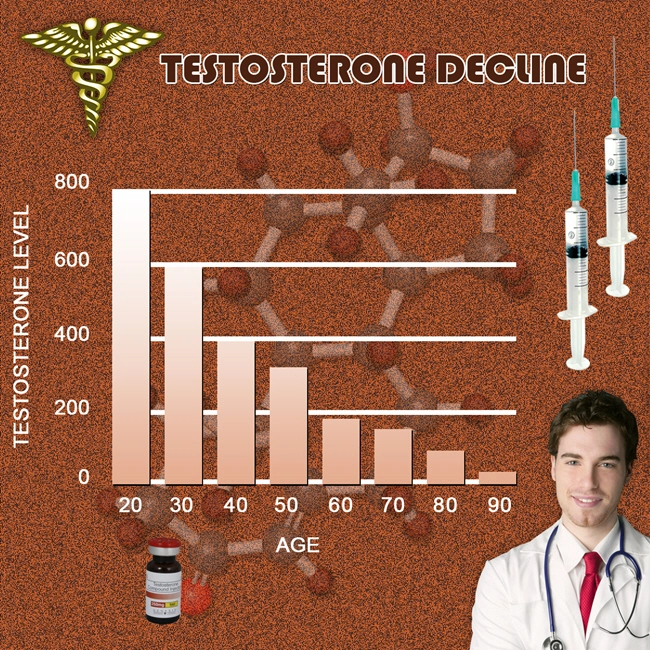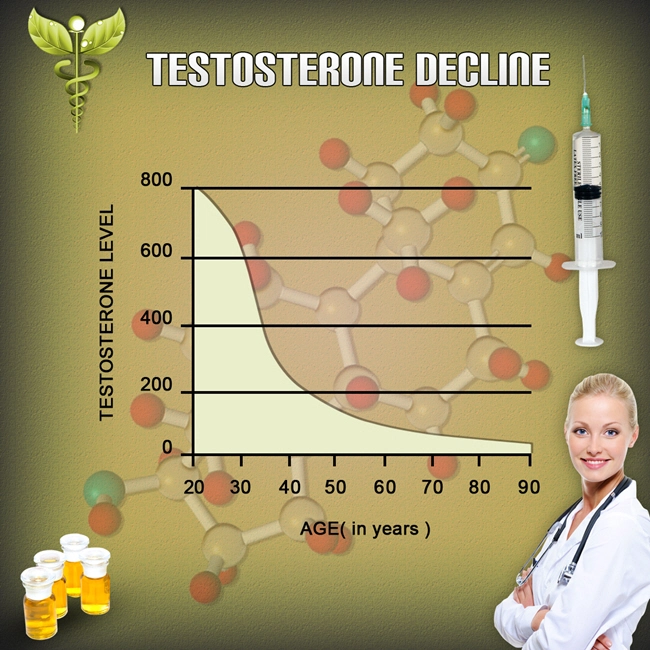
Video Link: https://vimeo.com/274399469
Video Download: Click Here To Download Video
Video Stream: Click Here To Stream Video
Video Link: https://vimeo.com/274399426
Video Download: Click Here To Download Video
Video Stream: Click Here To Stream Video
Video Link: https://vimeo.com/274399386
Video Download: Click Here To Download Video
Video Stream: Click Here To Stream Video
Want to Boost Your Testosterone Levels?
Then Start Long-Distance Running!
Attention ladies! If you're interested in a great sex life, look no further than a marathon runner." Marathon runners are the best in bed," proclaimed a recent headline. According to the latest scientific research, long-distance runners are red-hot...scientifically speaking.
 The headline is based on a study that merely looked at long-distance runners’ finger ratios -- said to be a marker for high testosterone levels -- not reported partner sexual satisfaction (or, as other sources indicate, high sperm counts and "reproductive fitness").
The headline is based on a study that merely looked at long-distance runners’ finger ratios -- said to be a marker for high testosterone levels -- not reported partner sexual satisfaction (or, as other sources indicate, high sperm counts and "reproductive fitness").
If marathon runners are great lovers and desirable to women, why? The obvious conclusion is that they are in excellent physical condition: low body-fat levels, no protruding beer bellies, and they possess both a dedication to good health and a work ethic that's off-the-charts.
But There May Be Another Factor Involved
The fact that a man is willing to dedicate so much effort and time into his pastime signals that in a natural selection sense, this is indeed a high-quality male, or, as single women are fond of saying, “quite a catch.” According to new research, long-distance running might be the mark, natural-selection-wise, of a high-quality male, one that women would do well to select as a mate.
According to researchers, long-distance runners are more likely to have higher levels of testosterone and could have evolutionary signs of desirable genes. Higher testosterone levels (the male sex hormone) can deliver evolutionary advantages such as high sex drive and sperm count and athletic ability.  Researchers are debating the question: did females look favorably upon males with good long-distance running ability eons ago in the hunter-gatherer past?
Researchers are debating the question: did females look favorably upon males with good long-distance running ability eons ago in the hunter-gatherer past?
And if they did, was it a result of their capacity to snag prey? In the journal PLoS One, researchers say that “persistence hunting” (catching prey through long-distance pursuits) was probably one of the more useful forms of hunting before the domestication of dogs, and therefore may have played a significant role in the direction that humans evolved.
In their study, the researchers measured the testosterone levels of exposure in the womb, which sets baseline levels later on in life, in marathon runners and compared this with their finishing times in the most extensive study of marathon runners of this kind. The results? They found a direct link between quicker times and higher testosterone levels.
The Study was Precise and Detailed
The study, conducted by the University of Cambridge’s Division of Biological Anthropology and published in the journal PLOS ONE, analyzed a group of 542 long-distance runners (439 men and 103 women) who took part in the Robin Hood half marathon in Nottingham, England. They found that the best performing athletes were likely exposed to higher prenatal testosterone levels in their mother’s blood. Participants ranged between the ages of 19 and 35 and were all white (Caucasian).
The half marathon, they say, was chosen for its appropriateness to pre-agricultural, hunter-associated running and reflected endurance running ability. All competitors wore small electronic chips to guarantee accurate race timings. Prenatal testosterone exposure, which “androgenized” the fetus, is also associated with stronger sex drive, higher sperm count, and better cardiovascular efficiency in men.
Bluntly speaking, better long-distance running skills might signal a top-quality male — at least regarding reproductive fitness. The research is based on the idea called the 2D:4D ratio -- a measurement of the ratio between the length of the index finger (second digit) and the ring finger (fourth digit).
 Prior research found that men with a low 2D:4D ratio (when their ring finger is comparatively longer) might have been exposed to higher testosterone levels in the womb, which is connected to the potential for reproductive success.
Prior research found that men with a low 2D:4D ratio (when their ring finger is comparatively longer) might have been exposed to higher testosterone levels in the womb, which is connected to the potential for reproductive success.
They photocopied the hands of the 542 runners and measured their testosterone levels using a 2D:4D digit ratio test, which the researchers say is the most accurate way to work out prenatal exposure to testosterone.
In this test, if a person’s fourth (ring) finger is longer than the second (index) finger on their hand, they are likely to have been exposed to higher levels of testosterone in the womb.
The bigger the fourth than the second, the higher the levels. The digit ratios were measured using specific electronic calipers and were taken twice from each photocopy to ensure accuracy. The researchers then analyzed the results, looking for an association between the digit ratio and the race time in each sex.
What Were the Primary Results?
The conclusions were that there was a "significant positive correlation" among the men between right and left-hand 2D:4D ratio and marathon time, with higher levels of performance associated with a lower, more "manly," digit ratio. The correlation strengthened after controlling for age. The same was true of the female sample but to a lesser degree.
How Did the Researchers Interpret the Results?
The researchers say their results support the theory that endurance running ability may signal reproductive potential in men through its association with prenatal exposure to testosterone.
Running prowess, they suggest, could act as a reliable signal for male reproductive potential. The results show that 10% of men with the most masculine digit ratios were, on average, 24 minutes and 33 seconds faster than the 10% of men with the least male digit ratios.
The correlation was also found in women (the top 10 per cent ran 11 minutes and 59 seconds faster than the bottom 10 percent), but the phenomenon was much more pronounced in men, suggesting a stronger evolutionary selection for running ability.
"The observation that endurance running ability is connected to reproductive potential in men suggests that women in our hunter-gatherer past were able to observe running as a signal for a good breeding partner," said the study's lead author Danny Longman from Cambridge University.
observe running as a signal for a good breeding partner," said the study's lead author Danny Longman from Cambridge University.
Researchers said females might have selected for such athletic endurance when mating during our hunter-gatherer past, perhaps because 'persistence hunting' -- exhausting prey by tirelessly tracking it -- was a vital way to get food. In “Persistence Hunting” -- one of the earliest forms of human hunting -- often required running for long distances.
This may act as a reliable signal of reproductive potential, say the researchers. Since increased testosterone exposure in the womb is associated with reproductive success, an association between testosterone and endurance running would make running prowess a reliable signal of male reproductive potential, they argue.
It was thought that a better hunter would have got more meat and had a healthier and larger family due to providing more meat for his family. But hunter-gatherers may have used egalitarian systems with equal meat distribution as we see in remaining tribes today. In which case, more meat is not a factor. Still, the ability to get meat would signal underlying traits of athletic endurance and intelligence -- to track and outwit prey -- and generosity to contribute to tribal society.
"All features you want to be passed on to your children," Longman explained. Good providers, say the researchers, tend to be generous, and good hunters tend to be intelligent — and both of these traits likely attracted more females, too. It’s unclear whether or not hunter-gatherers provided solely for their families or shared their bounty within their tribe, as remaining tribes do.
There would be no need for females to seek out the fittest male to ensure a healthy, well-fed family in the latter case. However, good hunters and providers are also desirable for their shared traits of intelligence and generosity.
In modern culture, hunters are portrayed as the more dynamic, but the gatherers won out in the end. The gathering led to farming, which led to villages, cities, and civilization as we know it.
Working with the largest participant group of marathon runners of any study of its kind, the research team used the length of their fingers to gauge their level of exposure to testosterone during gestation.
The Evidence is Still Here Today
You can still see examples of persistent hunting in parts of Africa and Mexico today. Hunters will deliberately choose the hottest time of day to hunt and  chase and track an antelope or other prey over 30 to 40 kilometers for four or five hours.
chase and track an antelope or other prey over 30 to 40 kilometers for four or five hours.
The animal recovers less and less from its running until it collapses exhausted and is easy to kill.
Long-distance runners were better hunters and hence better providers—which besides the physical and reproductive advantages associated with higher testosterone exposure, made them rather desirable mates.
It might still have the same effect. Researchers did not look at whether these more "masculine" men were judged more attractive to women.
However, Not Everyone Agrees with the Results of the Study
The conclusions of this study sent the UK media into a feeding frenzy. In fact, many media outlets made claims that were not supported by the study. Here is a sample of a few responses:
- Mail Online: "Those who run endurance races get more dates and have a higher sex drive" -- unproven
- Metro: "Marathon runners are the best in bed" -- unproven
- The Daily Telegraph: "Good athletes are likely to have had ancestors who were excellent hunters… creating a biological advantage for their descendants
 and passing on the best genes" -- unproven
and passing on the best genes" -- unproven
Strong opinions, for sure. But there were a few more balanced responses. The Daily Mirror and Huffington Post toned down the rhetoric and sprinkled their articles with a few "possibilities" and a "probably."
However, the media was united in one aspect: none of the coverage stated that the study used the running ability as a proxy for hunting prowess in hunter-gatherer societies and had little or nothing to do with modern relationships.
What Type of Research Was This?
This observational study was undertaken to test the researchers' theory that physical ability at endurance running is linked with male reproductive fitness. The researchers explained that the high value placed by females on male ability to protect and provide has been well-known throughout recorded history, especially in more primitive times.
Before humans switched to an agriculture-based society, hunting ability was the best and perhaps the only way of showing and proving their ability to provide and protect. Several theories attempt to explain this connection; one is that hunting success is a reliable signal for underlying traits such as athletic ability, intelligence, or generosity in distributing the meat.
Conclusion
This study of distance runners and their digit ratios and the link between successful hunting and male reproductive potential is not universally accepted. This observational study used long-distance runners as stand-ins for hunters and digit ratio as a metaphor for reproductive potential. The most it can show is a connection between the two. It should also be noted that:
- the study did not study any non-runners
- the researchers measured the runners' ability in only one race
- many qualities contribute to marathon running success, including muscle strength and mental endurance
- the study only included white runners, so the results may not apply to people of other ethnicities
To be sure, this is a fascinating study. However, it does not conclusively prove that long-distance runners are more fertile or more attractive. In addition to long-distance running, you can increase your fertility levels by stopping smoking, drinking alcohol in moderation, and maintaining a healthy weight through healthy eating and exercise.
Contact us for a FREE, no-obligation discussion concerning the benefits of Testosterone Replacement Therapy (TRT).
Reference
Male Long Distance Runners Gain Evolutionary Advantage: High Sex Drive And Reproductive Desirability
Contact Us Today For A Free Consultation
Dear Patient,
Once you have completing the above contact form, for security purposes and confirmation, please confirm your information by calling us.
Please call now: 1-800-380-5339.
Welcoming You To Our Clinic, Professor Tom Henderson.

- No Gym since COVID-19? No Problem! [Last Updated On: August 7th, 2024] [Originally Added On: January 12th, 2021]
- Video - Growth Hormone Builds Muscle and Burns Fat! [Last Updated On: March 5th, 2025] [Originally Added On: October 12th, 2021]
- Growth Hormone and Fitness [Last Updated On: February 15th, 2025] [Originally Added On: October 12th, 2021]
- Growth Hormone and Creatine [Last Updated On: February 15th, 2025] [Originally Added On: October 12th, 2021]
- Growth Hormone boosts Metabolism! [Last Updated On: February 13th, 2025] [Originally Added On: October 12th, 2021]
- Testosterone and Muscle Building [Last Updated On: February 13th, 2025] [Originally Added On: October 12th, 2021]
- Testosterone and Exercise [Last Updated On: February 15th, 2025] [Originally Added On: October 27th, 2021]
- HGH and Physical Fitness [Last Updated On: February 12th, 2025] [Originally Added On: October 28th, 2021]
- Boost HGH with Squats! [Last Updated On: February 15th, 2025] [Originally Added On: October 28th, 2021]
- Blood Flow Restriction Training [Last Updated On: September 8th, 2024] [Originally Added On: December 1st, 2021]
- The Skinny on How Hormones Affect Your Weight [Last Updated On: June 8th, 2025] [Originally Added On: February 19th, 2023]
- Unlocking the Power of Your Potential: A Sleek and Healthy Approach to Human Growth Hormone and Fitness [Last Updated On: February 15th, 2025] [Originally Added On: February 15th, 2025]
- Unwrapping the Powers of Creatine - A Brain and Brawn Booster! [Last Updated On: February 15th, 2025] [Originally Added On: February 15th, 2025]








